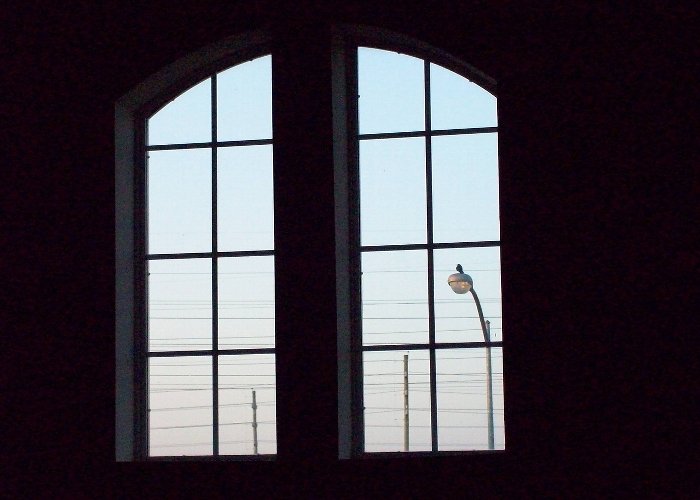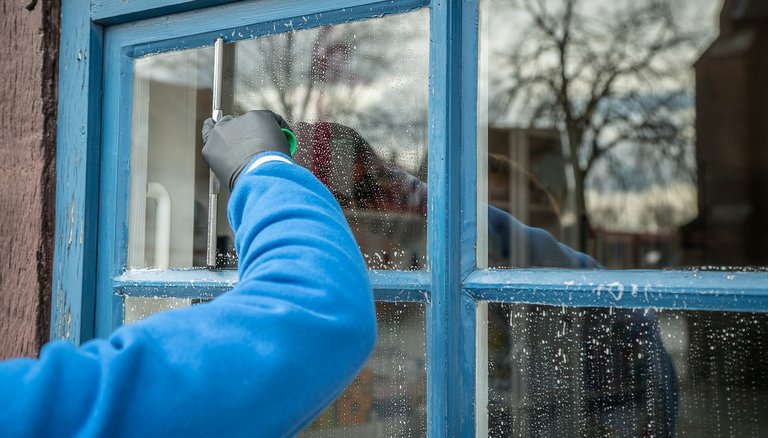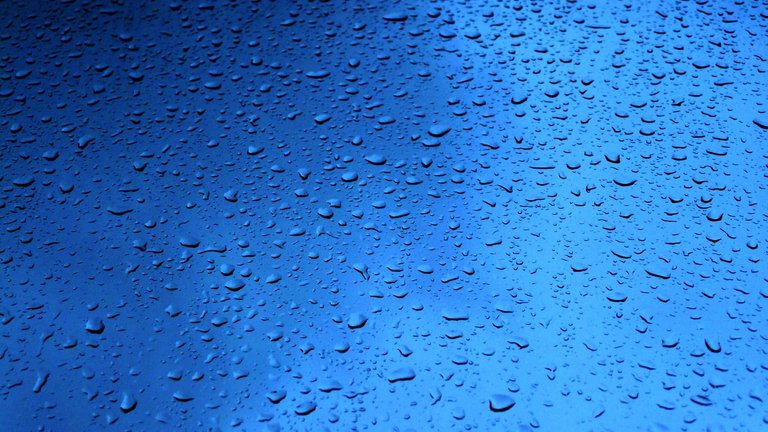The dynamism of science is one factor that makes the field ever interesting and forever evolving. There has been a plethora of science-inspired inventions that seek to lessen the burden of having to do household chores manually through automation since the advent of technological Renaissance. From electric brush that let you brush your teeth with ease, washing machine and dryers that tidy your soiled clothes to home robots that assist with household chores; there is endless possibilities to scientific innovations and inventions. One of such technologies that has been around for only a few years and which seek to lessen the burden of domestic chores is self-cleaning windows.

Source: Pixabay commons. CC0 licensed]
If you are someone who hates the task of cleaning your windows, especially when you have to climb up a ladder with bucket and squeegee to do this; or you are building a skyscraper which you will have to employ the services of professional cleaning companies to have it cleaned as at when due at outrageous costs, then replacing your existing windows with self-cleaning windows or fitting the new skyscraper under construction with self-cleaning windows, is all you need to end your woes because self-cleaning windows clean themselves of dirt and debris using the sun and the rain! In this article, we will be looking at the meaning of self-cleaning window, its two major mechanisms of action, advantages and disadvantages, and other related issues that I may find worthy of inclusion.
What is self-cleaning windows?
Self-cleaning windows are special type of windows that are made of glass panes which have been coated with ultra-thin layers of a photo-catalyst that interacts with sunlight to break off the dirt and debris from the glass window which can then be washed of by rain or a light spray of water. The key component that equipped these windows with self-cleaning ability is the photo-catalyst which is actually titanium dioxide. Ultra thin layers of this powdery compound is used to coat the glass panes during production so that when ultraviolet rays shine on them, a chemical reaction is elicited during which the force of adhesion clinging dirt and debris to the glass panes is broken and the filths loosened and washed away when next rain falls or by a splash of water. The coating of titanium dioxide is so ultra-ultra thin that light rays passing through the glass is only reduced by about 5 percent.

[Source: pixabay commons. CC0 licensed]
The mechanisms of self-cleaning glass windows
There are two mechanisms used by self-cleaning glass windows to keep clean and keep dirt and filths away: photocatalysis (also known as light-activated) mechanism and hydrophilic (also knowm as water-loving) mechanism. Actually, there is some interesting chemistry involved in each of these mechanisms. In one of the chemical processes, encrusted dirt is broken down and chipped away from inside out while the other completely changed the hydrophobic nature of glass into a water-loving surface structure. We consider each of these mechanisms in turn for better understanding.
Photocatalysis (or light-activated) mechanism
In a photocatalytic process, a photocatalyst initiates chemical reactions once it is shone upon by the light of a certain wavelength. In this case, titanium dioxide is the photocatalyst as has been noted previously, and its right kind of light is ultraviolet (UV) rays. When the titanium dioxide coating of a self-cleaning glass window is exposed to ultraviolet rays, electrons are generated which interacts with water molecules in the air to produce hydroxyl radicals, enabling oxidation and reduction reactions on the glass coating during which the highly reactive hydroxyl radicals attack the stains on the glass window which are mainly organic filths and loosened them from inside out, which can then be easily washed away when next rain falls.

[Source: pixabay commons. CC0 licensed]
Hydrophilic (or water-loving) mechanism
Glass is ordinarily hydrophobic. This is also known as water-hating. One of the most common ways to appreciate this feature of glass is to allow some drops of water to fall onto a glass pane. You will notice that the drops of water falling on the glass do not spread out; instead, they form water droplets on the glass pane. When the glass pane is tilted or held up vertically, the droplets will run down the pane, leaving some paths of dirty streaks which are very visible to the eyes. This is, however, not the case with self-cleaning glass windows, thanks to their titanium dioxide coating.
Here, the hydroxyl radicals produced by photocatalysis make glass hydrophilic (water loving), and so prevents rain from forming droplets on the glass pane. Instead, when water drops on the glass pane, it spreads out across the glass in a very even sheet. During rainfall when rain falls on a vertically mounted dirty self-cleaning glass, the water molecules will spread out across the glass pane in even water sheet that wipes down the glass neatly like a squeegee, carrying dirt as it does so, and hence leaves no streaks of dirty paths because no droplets (that would have run down the glass as balls of water droplets) were formed.
Merits and demerits of self-cleaning glass
From what has been said so far about self-cleaning windows, it is obvious that one of the chief benefits of such windows is they help prevent accidents that might result when people wobble up ladders with buckets of water and squeegee. Secondly, self-cleaning windows save time and money. You won't have to abandon what you do daily to generate income in order to clean your windows. Neither will you have to hire anyone and spend outrageous sums in order to have your windows cleaned. Because the coating of self-cleaning windows are designed to keep working for the lifetime of the windows. So you need not bother yourself.

[Source: pixabay commons. CC0 licensed]
However, even as self-cleaning windows have striking merits that make them quite appealing, they are not completely without demerits. They are about 15% to 20% more costly than conventional windows, and so not everyone can afford them. Secondly, they require sun and water to work. So people still have to employ manual labours to have their windows cleaned during dry season when rain hardly falls. Thirdly, photocatalysis is only effective against dirt and filth of organic origin; it cannot clean salt deposits, and paint stains.
In all, it is clear that the merits of self-cleaning windows compellingly dwarf whatever demerits they may have. And so is still worth using especially where the structure is a multiple storey-building. Thanks for your time.
References for further reading
- Science of Self-cleaning windows: how do they work?
- Self-cleaning glass
- Self-cleaning windows
- Self-cleaning windows
Yours truly,
@eurogee
Do You Blog About Science, Technology, Engineering, and Mathematics? If Yes, Patiently Read The Below Info


Join Euronation Community on Telegram and whatsapp through the below links to socialize with larger steemit community:

No Witnesses = No Steem Blockchain; If You Truly Love Here, Vote For Witnesses NOW!
Click This Link To Vote Now


Windows taking care of themselves is a pretty neat idea. Outside of normal outdoor-facing windows, this simple technology can be used on computer monitors and PDA screens, where you definitely don’t want fingerprints.
Exactly. Skipped my mind to add this. That's awesome of you, man. I really appreciate this input. Followed!
Wont this be coming in the way of police investigations? You know how important finger prints are
This post has been voted on by the steemstem curation team and voting trail.
There is more to SteemSTEM than just writing posts, check here for some more tips on being a community member. You can also join our discord here to get to know the rest of the community!
This is insightful. Resteemed and voted.
Thanks bro
My brother in law is a window cleaner.
He won't like your post. ;-)
Joke apart, a really interesting post!
I never heard about these technologies before. I'm glad you shared!
Welcome sir✌️✌️
Well, that is a plus. It will help reduce the risk of high rise human window cleaners: a job fraught with risk and fatality.
Yes sir. Thanks for visiting!
Wow... I have never read about nor see a self cleaning glass before. And of course there is always a chemistry behind virtually all that exists. I think I will get that which works photocatalytically for my new house. #winks.
Another wonderful one from @eurogee keep it up sir.
Thanks boss
This is what i call an awesome read. But i have a question
Are there self cleansing glasses that are Both light-activated and hydrophilic?
All self cleaning glasses are both photo activated and hydrophilic. Thanks
Amazing I must say, I guess I don't have to worry about who gets to dust of first from my window when I have this type.
Nice work here bro
This post has been voted on by the steemstem curation team and voting trail.
There is more to SteemSTEM than just writing posts, check here for some more tips on being a community member. You can also join our discord here to get to know the rest of the community!